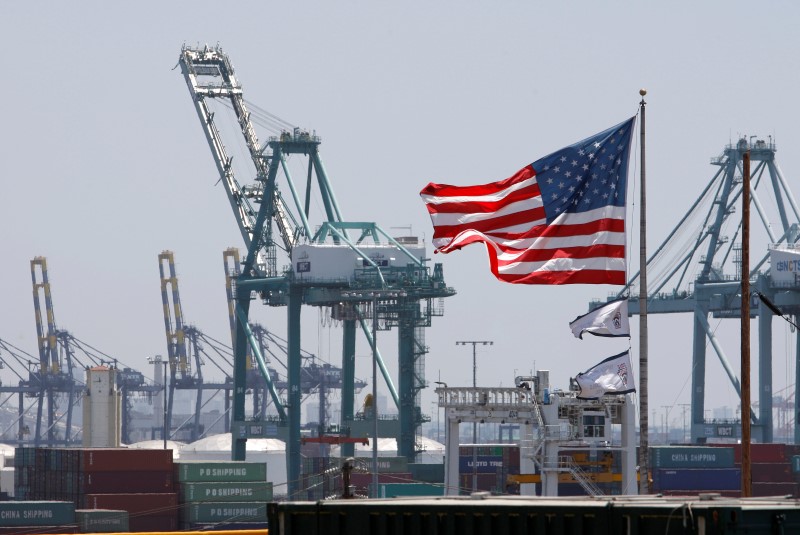By Geoffrey Smith
Investing.com -- The U.S. economy shrunk by slightly more than initially estimated in the first quarter of the year, according to fresh data released on Thursday.
Gross domestic product contracted at an annualized pace of 1.5%, rather than the 1.4% preliminary reading, the Bureau of Economic Analysis said.
The gloomy revision was offset slightly by a small positive surprise on more timely data on jobless claims. The number of people making initial claims for jobless benefits fell to 210,000 from 218,000 the previous week. Analysts had expected 215,000. The number of those making continuing claims rose by just over 30,000 however to 1.346 million.
The jobless claims numbers show little sign of the current labor market tightness unwinding in the near future, despite a slew of corporate updates suggesting that more and more companies are looking to restore profit margins by cutting costs - including labor costs.
The fall in GDP was largely the result of net trade, reflected in record imports during the quarter, and by inventory de-stocking, with the vehicle segment particularly badly affected by renewed supply chain problems.
However, final sales to domestic purchasers, which excludes such factors, still grew at an annualized rate of 2.7%, suggesting that the consumer demand was still robust.
The BEA also gave a reminder of the increasing price pressures felt across the country. Energy prices increased 42.5%, while food prices increased 11.2%. Excluding food and energy, prices increased 6.7% percent in the first quarter, accelerating from a rise of 6.2% in the final quarter of 2021.
Oxford Economics' Lead U.S. economist Lydia Bussour said the figures kept the Federal Reserve on track for a half-point raise in the Fed Funds target range at both of its next two meetings.
"While we still expect the Fed to steer the economy toward a soft landing, downside risks to the economy and the probability of a recession are increasing," Bussour said in a note to clients. "A more aggressive pace of Fed rate hikes, a tightening in financial conditions, the ongoing war in Ukraine, and China's zero-COVID strategy increase the risk of a hard landing in 2023."
